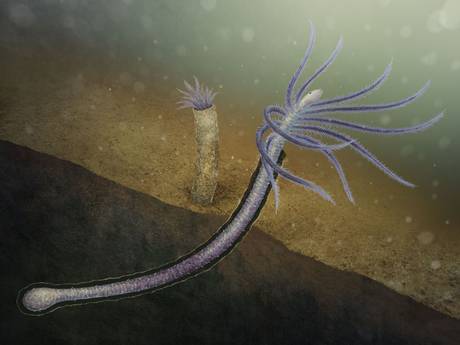Discovered the first animal that evolved by losing the parts that no longer needed it. Called Facivermis, it lived 518 million years ago and although its fossil had been known for 30 years, it has only been studied by the British University of Exeter team led by Richard Howard. The research is published in the journal Current Biology.
The mystery has long surrounded the Facivermis, a worm-like creature with an elongated body and five pairs of thorny legs placed near the head. Precisely this characteristic had suggested that it could be the missing link between the legless worms and a group of animals called "lobopods", which had limbs along the whole body.
Artistic representation of the Facivermis (source: Franz Anthony)
The study reveals that the Facivermis belonged to the lobopods, but since it lived on the seabed, anchored with a sort of bulb placed at the end of its body, it evolved by losing the lower limbs. The animal was also wrapped in a sort of tube-like bag, from which only the spiky head and legs protruded and whose function was unclear.
"Most of his relatives - Howard said - had three to nine sets of legs to move, but our results suggest that Facivermis lived anchored to the seabed. In this way his lower limbs were not useful and over time the species he stopped having them. His upper limbs, on the other hand, were used to filter food from water. "
The Cambrian period is seen as the dawn of animal life and researchers have been surprised to find a species considered primitive in evolution already at this stage. "We have known this species for about 30 years, but only now have we understood what its place was in the evolutionary tree," observed one of the authors Xiaoya Ma, of the Chinese university of Yunnan. "Studies like this - he concluded - help us understand the shape of the tree of life and understand where the adaptations we see now in the species come from"














